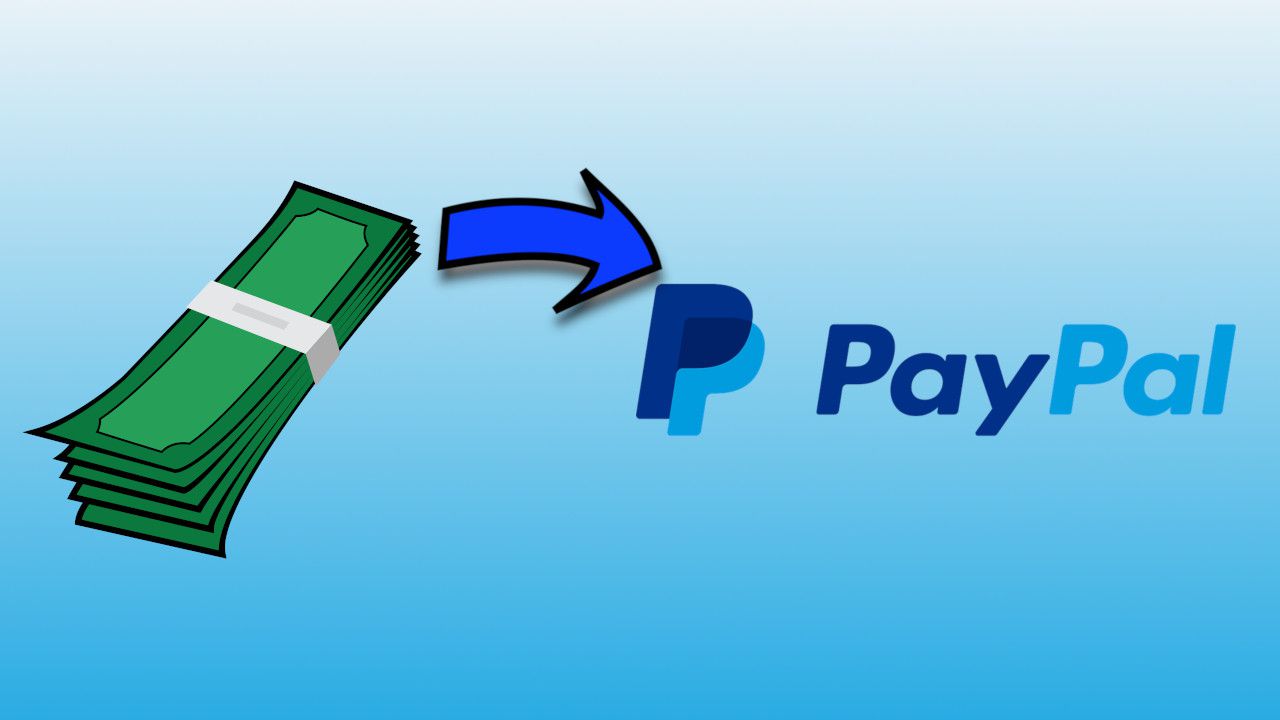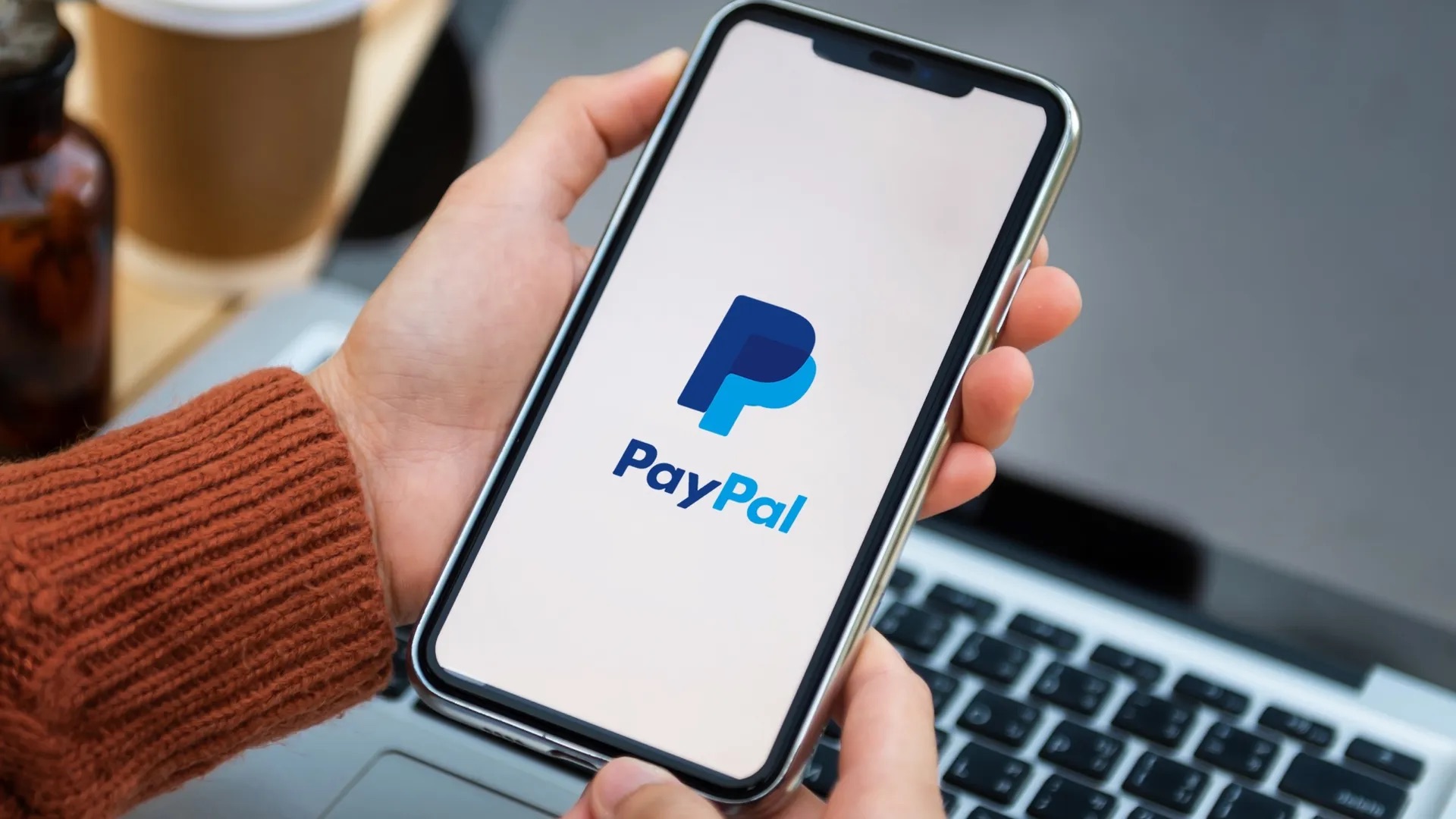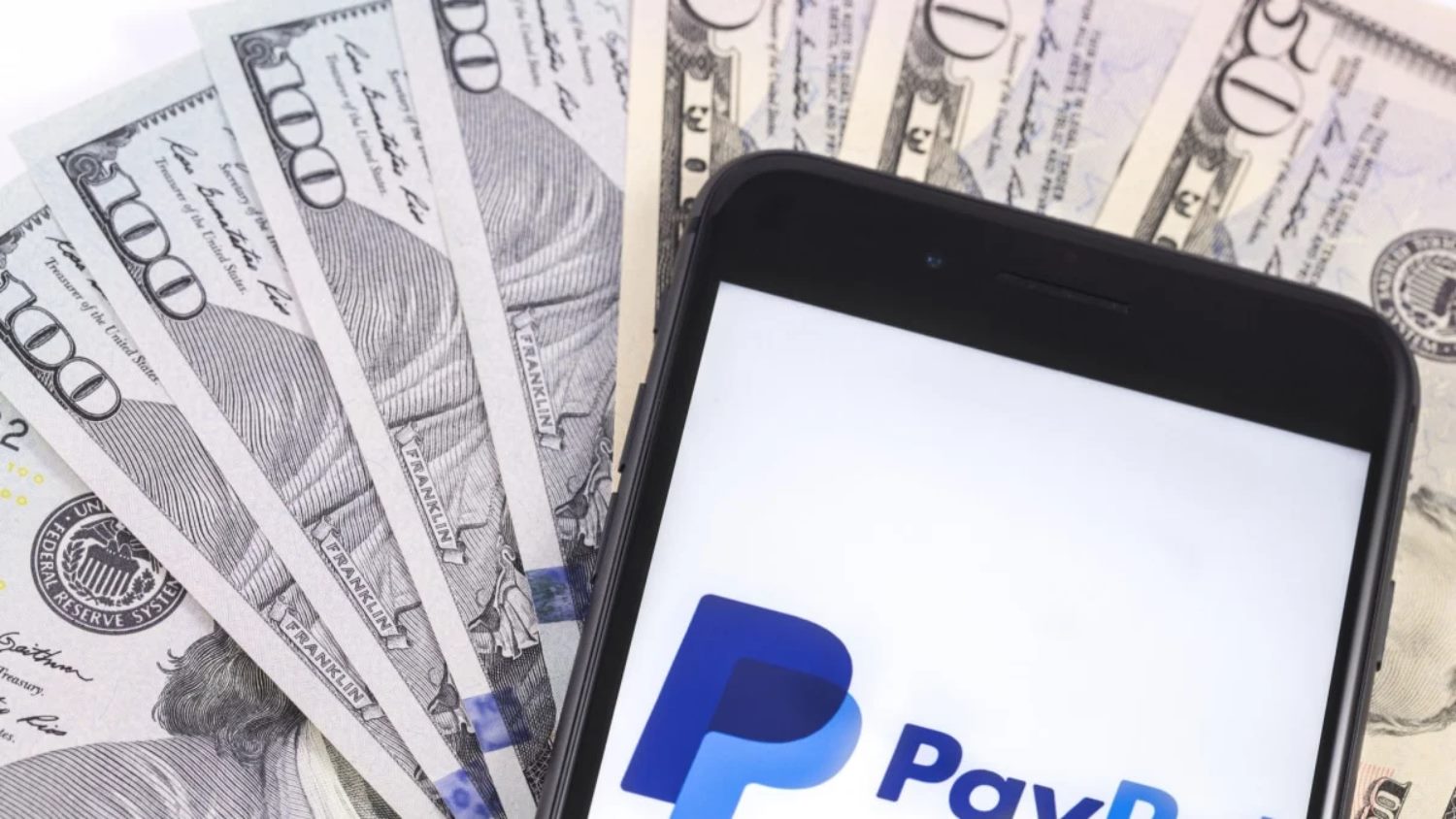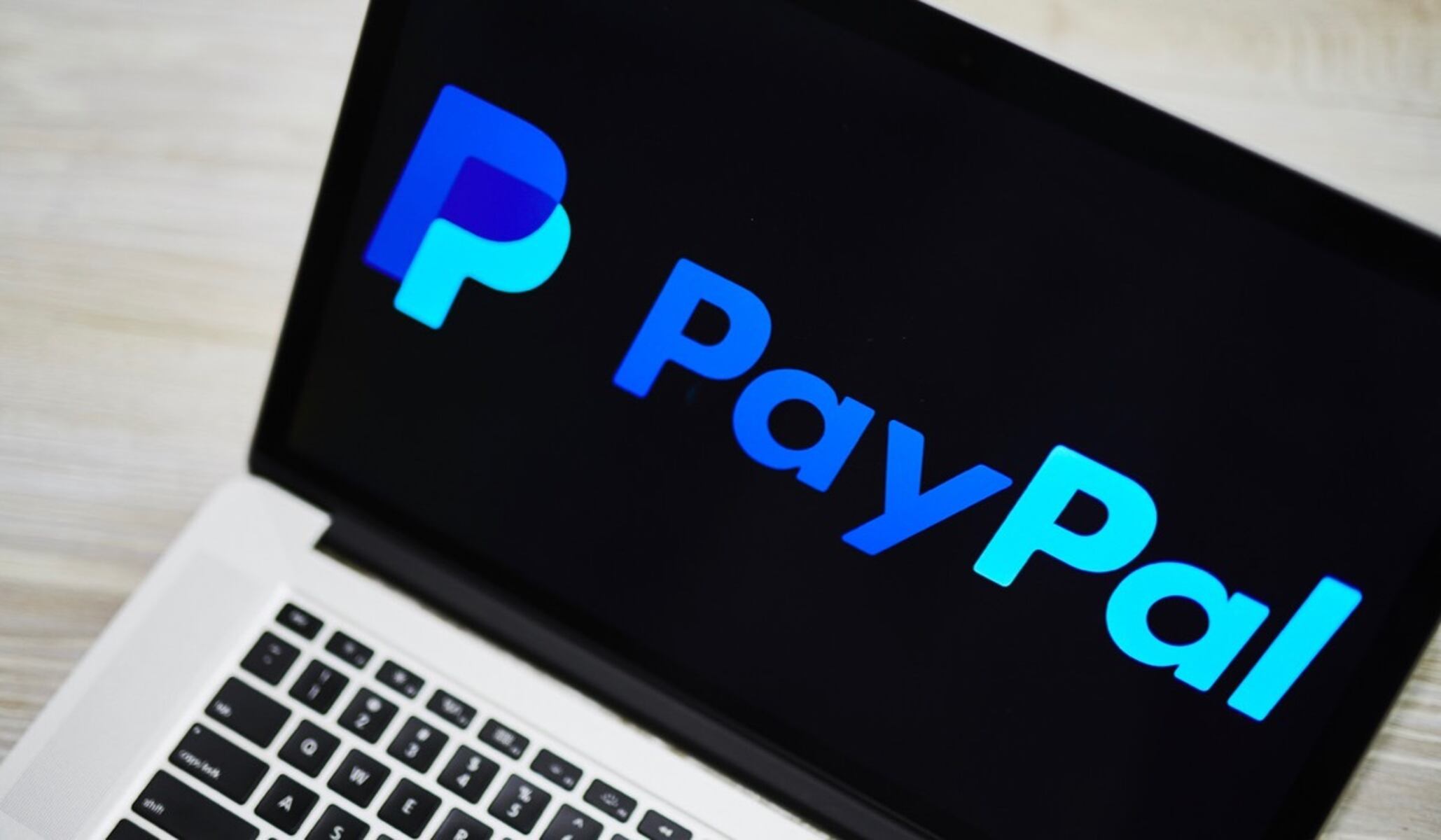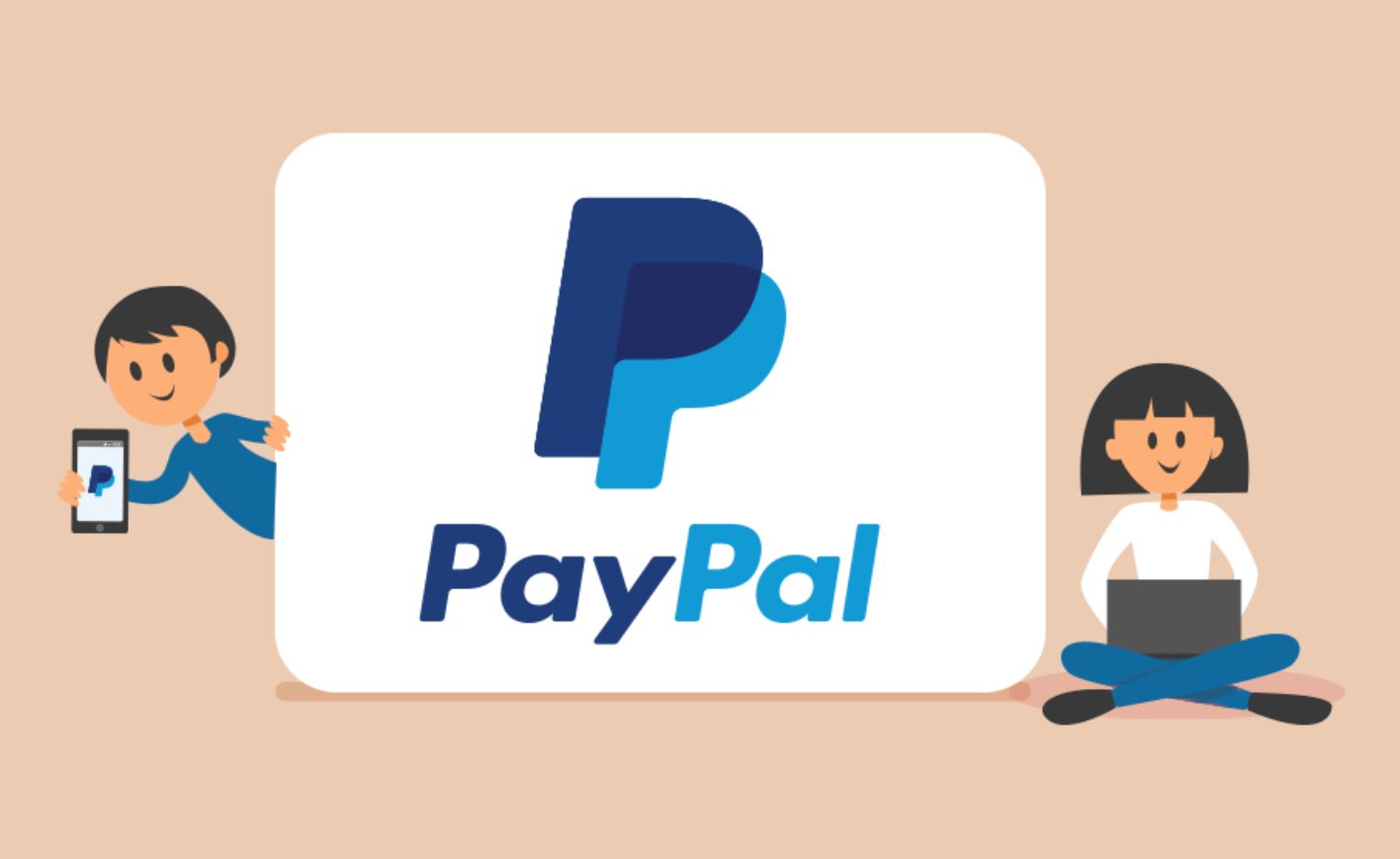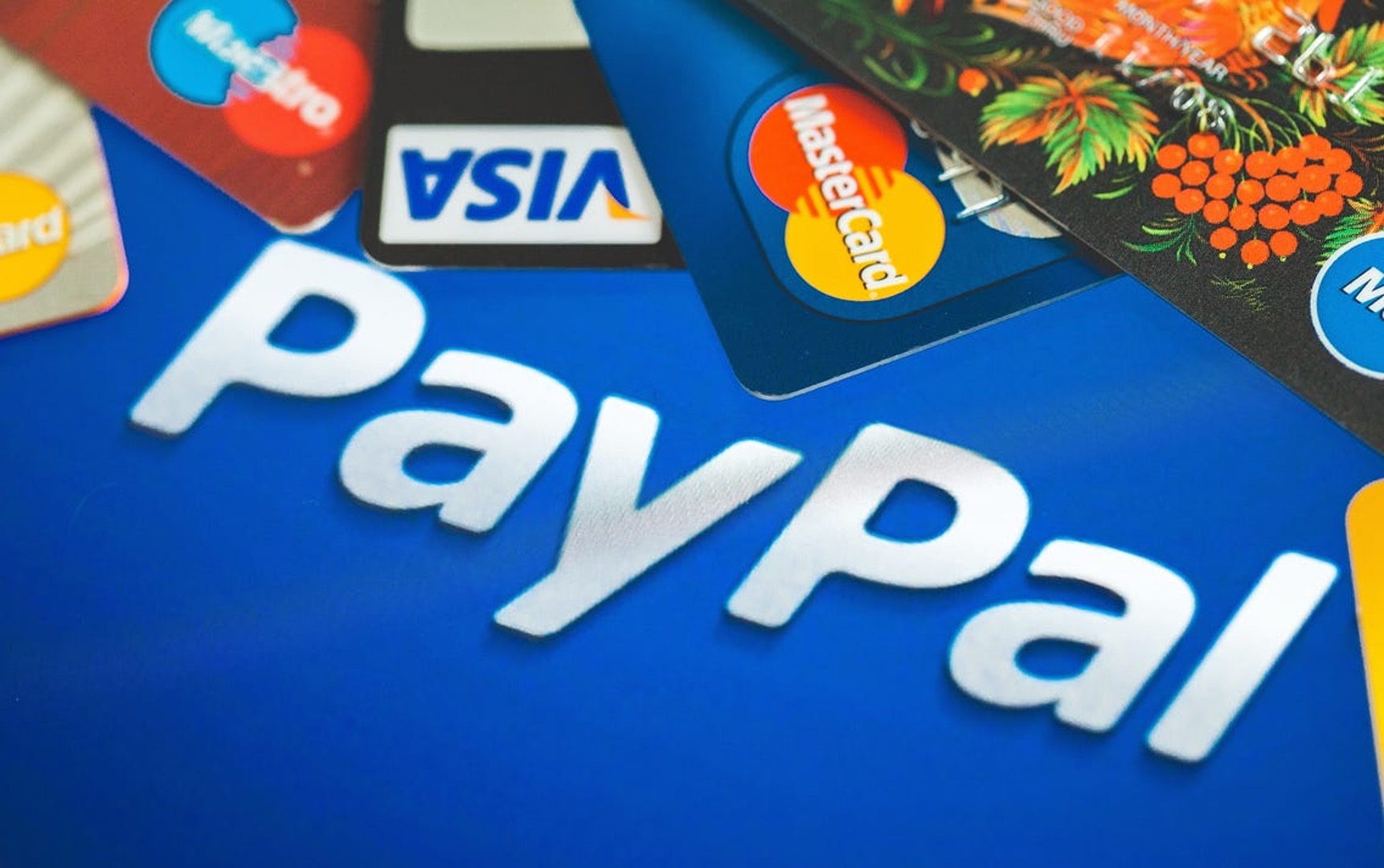Introduction
PayPal has become a household name in the world of online payments and money transfers. Whether you are making a purchase on your favorite e-commerce website or sending money to a friend halfway across the globe, PayPal offers a secure and convenient way to handle financial transactions. In this article, we will explore how PayPal makes money and the various revenue streams that contribute to its success.
Founded in 1998, PayPal has transformed the way we handle online transactions. It allows individuals and businesses to send and receive payments electronically, eliminating the need for physical cash or checks. Since its inception, PayPal has grown exponentially, boasting over 392 million active accounts as of 2021.
With its user-friendly interface and robust security measures, PayPal has gained the trust of millions of users worldwide. It has become the go-to payment solution for individuals and businesses alike, making it an integral part of the digital economy.
So, how does PayPal make money? Let’s delve into the various revenue streams that contribute to PayPal’s profitability and success.
What is PayPal?
PayPal is an online payment platform that allows individuals and businesses to send and receive money electronically. It provides a secure and convenient way to handle financial transactions without the need for physical cash or checks. With PayPal, users can link their bank accounts, credit cards, or debit cards to their PayPal accounts, making it easier to make online payments.
One of the key advantages of using PayPal is its widespread acceptance. It is supported by millions of merchants and online platforms, making it a preferred payment method for a wide range of transactions. Whether you’re purchasing goods from an e-commerce website or sending money to a family member, PayPal offers a seamless and efficient payment experience.
Another notable feature of PayPal is its buyer protection policy. When you use PayPal to make a purchase, you can feel confident knowing that your financial information is securely stored and protected. In case of any issues with your purchase, PayPal offers a resolution center to help resolve disputes and ensure a fair transaction for both buyers and sellers.
PayPal also offers a range of additional services to enhance the user experience. One such service is PayPal Credit, which allows users to make purchases and pay for them over time with flexible repayment options. This feature is particularly useful for larger purchases or when you need some extra time to make your payment.
Overall, PayPal has revolutionized the way we handle online transactions. With its user-friendly interface, widespread acceptance, and robust security measures, it has become the preferred choice for individuals and businesses around the world.
How does PayPal work?
Understanding how PayPal works is essential to grasp its revenue generation model. Here’s a simplified explanation of the process:
- Account Creation: To use PayPal, users must create an account. They provide their personal information, link their bank accounts, credit cards, or debit cards, and set up their preferred payment methods.
- Sending and Receiving Funds: Once the account is set up, users can send and receive money electronically. Users can send funds to others by entering the recipient’s email address or mobile number. The sender can choose to fund the payment from their PayPal balance, linked bank account, or credit/debit card. The recipient receives a notification and can then access the funds in their own PayPal account.
- Merchant Services: PayPal also offers merchant services for businesses. Merchants can integrate PayPal into their e-commerce websites or online platforms, allowing customers to make payments using their PayPal accounts. This not only provides a seamless checkout experience but also offers additional security and buyer protection benefits.
- Payment Processing: PayPal acts as an intermediary in the payment process. When a buyer makes a payment to a merchant, PayPal securely processes the transaction. It verifies the funds, deducts any applicable fees, and transfers the funds to the merchant’s PayPal account.
- Currency Conversion: PayPal simplifies international transactions by offering currency conversion services. It allows users to send and receive funds in different currencies, converting them at competitive exchange rates. PayPal earns revenue through a small fee applied to the exchange rate during currency conversion.
- Security and Fraud Protection: PayPal places a strong emphasis on security. It employs advanced encryption and monitoring systems to protect user information and transactions. PayPal also offers seller and buyer protection programs to safeguard against fraudulent activities and ensure a secure payment ecosystem.
Overall, PayPal works as a trusted intermediary between buyers and sellers, facilitating seamless and secure financial transactions. Its ease of use, wide acceptance, and additional services have made it a preferred choice for individuals and businesses alike.
PayPal’s revenue streams
PayPal generates revenue through various streams, allowing it to maintain its position as a leading online payment platform. Let’s explore some of the key revenue sources for PayPal:
- Transaction Fees: One of the primary revenue streams for PayPal is transaction fees. PayPal charges a small percentage of the total transaction amount for each payment received from a merchant. This fee varies depending on factors such as the merchant’s sales volume and the location of the buyer and seller.
- Cross-border Fees: PayPal also earns revenue through cross-border transactions. When users make payments in a different currency, PayPal applies a foreign exchange fee to convert the funds. This fee is generally a percentage of the transaction amount, allowing PayPal to generate revenue from international money transfers.
- Merchant Fees: PayPal offers additional services to merchants, such as advanced payment processing solutions, shopping cart integrations, and fraud protection tools. These services often come with a fee, providing PayPal with additional revenue streams from businesses that seek enhanced functionality and security for their online payments.
- In-person Transaction Fees: In addition to online payments, PayPal has expanded its services to include in-person transactions. With features like PayPal Here, merchants can accept payments using mobile card readers or QR codes. PayPal charges a transaction fee for these in-person payments, generating revenue from offline transactions as well.
- Interest Income: PayPal also earns interest income on funds that users hold in their PayPal account balances. When users maintain a positive balance, PayPal invests these funds and earns interest on them. This helps contribute to PayPal’s overall revenue.
- PayPal Credit: Another significant revenue stream for PayPal is its lending service, PayPal Credit. This service allows users to make purchases and pay them off over time with flexible repayment options. PayPal earns interest on the credit extended to users, generating revenue from interest charges and fees associated with PayPal Credit.
- Revenue from PayPal-owned Platforms: PayPal has strategically acquired various platforms to expand its services and reach a broader customer base. These platforms include Venmo, a popular peer-to-peer payment app; Braintree, a payment gateway for online businesses; and Xoom, a service that specializes in international money transfers. PayPal generates revenue through transaction fees, foreign exchange fees, and other charges associated with these platforms.
- Partnerships and Collaborations: PayPal collaborates with e-commerce platforms, banks, financial institutions, and rewards programs to expand its reach and offer seamless payment solutions to users. Through these partnerships, PayPal earns revenue through referral fees, transaction fees, and other revenue-sharing agreements.
By diversifying its revenue streams and continuously innovating its services, PayPal has established itself as a formidable player in the financial technology industry, driving both user adoption and revenue growth.
Transaction Fees
Transaction fees are a significant revenue source for PayPal. Whenever a buyer makes a payment to a merchant through PayPal, a small percentage of the total transaction amount is charged as a fee. These fees vary depending on several factors, including the merchant’s sales volume and the location of the buyer and seller.
PayPal’s transaction fees are structured in a tiered system. As a merchant’s sales volume increases, they may qualify for lower transaction fees. This incentivizes businesses to use PayPal as their payment processor and encourages higher transaction volumes, benefiting both PayPal and the merchant.
In addition to the transaction fee, PayPal may also charge a fixed fee per transaction. This fixed fee usually applies to higher-value transactions, providing additional revenue for PayPal.
These transaction fees contribute to PayPal’s revenue by generating income each time a payment is made through its platform. As more businesses and individuals choose PayPal as their preferred payment method, the volume of transactions increases, bolstering PayPal’s revenue stream.
Furthermore, PayPal’s transaction fees also cover the cost of providing its services, including maintaining the infrastructure, customer support, and ensuring the security of transactions. These fees allow PayPal to continually invest in technology and improve its platform for users.
It’s worth noting that transaction fees may vary based on the country in which the transaction takes place and the currency used. Cross-border transactions often involve additional fees, particularly when currency conversion is required. PayPal applies a foreign exchange fee to convert funds into the recipient’s currency, enabling PayPal to generate revenue from international transactions.
Overall, transaction fees play a crucial role in PayPal’s revenue generation model. By charging a percentage of each transaction and providing tiered pricing based on sales volume, PayPal can sustainably monetize its services while incentivizing businesses to use its platform for their payment needs.
Cross-border Fees
Cross-border transactions are a significant source of revenue for PayPal. When users make payments in a currency different from their own, PayPal applies foreign exchange fees and charges a small percentage of the transaction amount as a cross-border fee.
When a buyer sends money to a recipient in a different country or currency, PayPal handles the currency conversion. It converts the funds at competitive exchange rates, allowing the recipient to receive the payment in their preferred currency. However, PayPal applies a fee to the exchange rate, effectively generating revenue from the currency conversion process.
The cross-border fee for international transactions typically ranges from 0.5% to 2% of the transaction amount, depending on various factors such as the countries involved and the currency being converted.
These cross-border fees contribute to PayPal’s revenue stream by monetizing the convenience and reliability it offers for international money transfers. By handling the currency conversion and providing a secure payment platform, PayPal simplifies cross-border transactions for users, while simultaneously generating revenue from these transactions.
It’s important to note that the exact cross-border fees may vary based on factors such as the user’s country, the currencies being exchanged, and any applicable local regulations. PayPal provides transparent disclosure of these fees, ensuring users are aware of any additional costs involved in cross-border transactions.
Furthermore, PayPal’s ability to offer competitive exchange rates and transparent fee structures enhances its appeal as a preferred payment solution for global transactions. By providing a seamless experience and reliable currency conversion services, PayPal continues to attract users who require cross-border payment capabilities, thus bolstering its revenue from international transactions.
Overall, cross-border fees contribute significantly to PayPal’s revenue, as they account for the currency conversion services provided by PayPal during international money transfers. By leveraging its global reach and robust infrastructure, PayPal monetizes the convenience and trust it offers in handling cross-border transactions, ensuring a seamless payment experience for users around the world.
Merchant Fees
Merchant fees are an important source of revenue for PayPal. In addition to providing a secure and convenient payment processing solution, PayPal offers a range of additional services for businesses. These services often come with fees, allowing PayPal to generate revenue from merchants who require enhanced functionality and protection for their online payments.
One of the primary merchant services provided by PayPal is its payment processing solutions. Merchants can integrate PayPal into their e-commerce websites or online platforms, enabling their customers to make payments using their PayPal accounts. This integration simplifies the checkout process, enhances user experience, and provides additional security measures such as buyer protection programs.
In return for these services, PayPal charges a transaction fee to the merchant for each payment received. The transaction fee usually consists of a percentage of the total transaction amount, which varies depending on factors such as the merchant’s sales volume and the type of goods or services being sold.
In addition to transaction fees, PayPal may also charge a fixed fee per transaction. This fixed fee often applies to larger transactions or higher-value purchases, providing an additional source of revenue for PayPal.
Furthermore, PayPal offers various tools and services to help businesses manage their payments, reduce fraud, and streamline their operations. These services may include advanced reporting and analytics, fraud detection and prevention systems, chargeback management, and customized payment solutions. Merchants can opt for these additional services at an extra cost, providing an additional revenue stream for PayPal.
By charging merchant fees, PayPal continues to invest in its platform’s technology, security infrastructure, and customer support. This ensures that merchants receive reliable and efficient payment processing services, while PayPal generates revenue to support the ongoing development and maintenance of its services.
In summary, merchant fees play a crucial role in PayPal’s revenue generation model. By offering payment processing solutions, additional services, and enhanced security measures to businesses, PayPal generates revenue from transaction fees and other charges. This allows PayPal to support and improve its platform while providing merchants with a reliable and comprehensive payment solution.
In-person Transaction Fees
In addition to its online payment services, PayPal expanded its offerings to include in-person transactions as well. With features like PayPal Here, businesses can accept payments from customers using mobile card readers, QR codes, or other contactless payment methods. These in-person transactions incur specific fees, contributing to PayPal’s revenue stream.
When a merchant accepts a payment in-person using PayPal Here or similar tools, PayPal charges a transaction fee for the service. The transaction fee typically consists of a percentage of the total transaction amount, similar to online payment transactions. This fee may vary depending on factors such as the merchant’s sales volume, the payment method used, and the location of the transaction.
In-person transaction fees provide PayPal with an additional revenue stream by monetizing offline transactions. With the growing popularity of mobile payments and contactless transactions, PayPal’s in-person payment solutions cater to businesses that require flexible and convenient payment options.
The in-person transaction fees collected by PayPal serve multiple purposes. Firstly, they help cover the cost of providing the necessary technology and infrastructure for accepting in-person payments. This includes the development and maintenance of mobile card readers, payment processing systems, and associated security measures.
Secondly, these fees contribute to PayPal’s revenue growth and allow it to invest in further innovation and expansion. PayPal can use the revenue generated from in-person transactions to enhance its in-person payment solutions, offer additional services, and expand its reach to new markets.
By providing businesses with a seamless and secure payment experience, PayPal’s in-person transaction offerings have become a valuable revenue stream. Small businesses, retailers, and service providers can now accept payments from customers wherever they are, whether at a physical storefront or on-the-go, while PayPal benefits from the associated transaction fees.
Overall, in-person transaction fees are an important component of PayPal’s revenue generation model. By enabling businesses to accept payments in-person and providing a reliable and user-friendly payment experience, PayPal diversifies its revenue sources and strengthens its position as a leading player in the payment industry.
Interest Income
Interest income is a notable revenue stream for PayPal. When users hold funds in their PayPal account balance, PayPal invests these funds to generate interest. This interest income contributes to PayPal’s overall revenue.
When users maintain a positive balance in their PayPal account, PayPal pools these funds and engages in various investment activities to earn interest. The specific investment strategies and avenues used by PayPal may vary, but the goal is to maximize returns on the funds held in users’ accounts.
Interest income is generated from investments made by PayPal using the pooled funds. These investments may include short-term or long-term financial instruments, such as government bonds, corporate bonds, money market funds, or other low-risk investment vehicles.
PayPal’s ability to generate interest income stems from the fact that users often hold funds in their PayPal accounts for extended periods. These funds may be accumulated from payments received, refunds, or personal transfers that users do not immediately withdraw to their bank accounts or use for other purchases.
By earning interest on these funds, PayPal can supplement its revenue from transaction fees and other charges. This additional revenue source helps PayPal maintain its financial stability while supporting its ongoing operational and investment activities.
It’s important to note that interest income is not directly earned by individual users, and PayPal does not offer interest on individual account balances. Instead, PayPal earns interest on the pooled funds held collectively in users’ accounts.
Overall, interest income serves as a valuable revenue stream for PayPal. By strategically investing the funds held in users’ accounts, PayPal can generate additional income from interest, contributing to the overall financial success of the company.
PayPal Credit
PayPal Credit is a lending service offered by PayPal that allows users to make purchases and pay for them over time with flexible repayment options. It serves as another significant revenue stream for PayPal, as it generates income from the interest charges and fees associated with PayPal Credit.
With PayPal Credit, users can apply for a credit line and make purchases from participating merchants. The credit line is linked to the user’s PayPal account, allowing for easy access to funds when making eligible purchases.
One of the key benefits of using PayPal Credit is the ability to finance purchases with no interest if paid in full within a designated promotional period. PayPal often offers promotional financing options, allowing users to make larger purchases and spread out the payments over time without incurring any interest charges.
However, if the user does not pay off the full amount within the promotional period, interest may be charged on the remaining balance. The interest rates for PayPal Credit vary depending on the user’s creditworthiness and prevailing market rates.
In addition to interest charges, PayPal Credit may also apply fees for certain transactions or account activities. These fees may include late payment fees or fees for exceeding the credit limit, providing an additional revenue source for PayPal.
PayPal Credit not only benefits users by providing a more flexible payment option but also allows PayPal to generate revenue from the interest income and fees associated with the credit service. It expands PayPal’s service offerings and appeals to users who prefer the option to finance their purchases.
The revenue generated from PayPal Credit helps support PayPal’s operations, investments, and ongoing innovation. It enables PayPal to continually enhance its services and maintain a competitive edge in the digital payment landscape.
It’s important to note that PayPal Credit is subject to credit approval, and not all users may qualify for this service. PayPal evaluates the creditworthiness of applicants based on factors such as credit history, income, and other applicable criteria.
In summary, PayPal Credit serves as a significant revenue stream for PayPal, allowing users to finance their purchases while generating income from interest charges and fees. It enhances PayPal’s service offerings and strengthens its position in the digital finance industry.
Revenue from PayPal-owned platforms
PayPal has expanded its service offerings through strategic acquisitions, owning various platforms that contribute to its revenue generation. These platforms include Venmo, Braintree, and Xoom, each with its own revenue streams.
Venmo: Venmo is a popular peer-to-peer mobile payment app that allows users to send and receive money effortlessly. Venmo generates revenue for PayPal primarily through transaction fees. When users transfer funds from their Venmo balance to their linked bank accounts or debit cards, Venmo charges a fee for instant transfers.
Braintree: Braintree is a payment gateway that facilitates online payments for businesses. Merchants can integrate Braintree’s platform into their websites or mobile apps to accept payments. Braintree earns revenue through transaction fees charged to merchants for each payment processed through its gateway.
Xoom: Xoom specializes in international money transfers, providing fast and secure remittance services. Xoom’s revenue primarily comes from transaction fees and foreign exchange fees applied to international transfers. Users pay a fee when transferring funds internationally, and Xoom also earns revenue from the currency conversion process.
Through these PayPal-owned platforms, PayPal diversifies its revenue streams and extends its reach in the digital payment ecosystem. Each platform offers unique services and caters to specific user needs, allowing PayPal to tap into various market segments.
Furthermore, PayPal may also leverage these platforms to introduce additional services and features. For example, PayPal has integrated Venmo into its main platform, allowing users to use Venmo for online purchases and enabling merchants to accept payments from Venmo users.
By expanding its service offerings through these platforms, PayPal strengthens its position and competitiveness in the digital payments industry. It increases its user base, transaction volume, and overall revenue potential.
It’s worth noting that PayPal continues to invest in the growth and development of these platforms. This includes developing new features, optimizing user experiences, and expanding the range of services offered. These investments enable PayPal to drive revenue growth and ensure the continued success of its owned platforms.
In summary, revenue from PayPal-owned platforms, such as Venmo, Braintree, and Xoom, plays an integral role in PayPal’s revenue generation strategy. Through transaction fees, foreign exchange fees, and other revenue sources associated with these platforms, PayPal expands its service offerings and strengthens its position in the digital payment landscape.
Venmo
Venmo is a popular peer-to-peer mobile payment app owned by PayPal. With its user-friendly interface and social aspect, Venmo has gained widespread popularity, especially among younger users. It allows users to send and receive money effortlessly, splitting bills, and making payments in a fun and convenient way.
One of the primary revenue streams for Venmo is transaction fees. Venmo charges fees for certain types of transactions and services. For example, when users transfer funds from their Venmo balance to their linked bank accounts or debit cards, Venmo charges a fee for instant transfers. This fee provides Venmo with a consistent stream of revenue while offering users flexibility and convenience in accessing their funds.
In addition to transaction fees, Venmo also generates revenue through its merchant services. Merchants can integrate Venmo as a payment option on their websites or mobile apps, allowing customers to pay using their Venmo account balances. Venmo charges merchants a fee for each transaction made through its platform, contributing to its revenue stream.
Venmo’s social features also provide potential for monetization. Users have the option to share their payment activities and transactions with their network, creating a social feed similar to social media platforms. Venmo has explored opportunities to monetize this feature through partnerships with brands and businesses, allowing them to promote their products or services within the social feed.
Moreover, Venmo has introduced a debit card, known as the Venmo Card, which enables users to make purchases offline at merchants that accept Mastercard. Venmo earns revenue from the interchange fees charged to merchants for these transactions.
By providing a seamless and social payment experience, Venmo has gained a loyal user base, and its revenue continues to grow. PayPal has also integrated Venmo as a payment option within its main platform, allowing Venmo users to transact with millions of PayPal merchants worldwide, further expanding Venmo’s potential for revenue generation.
It’s important to note that Venmo’s revenue sources are subject to change as the platform evolves and introduces new features or partnerships. Venmo’s success contributes to the overall growth and diversification of PayPal’s revenue streams, solidifying its position as a leading payments company in the digital age.
Braintree
Braintree is a payment gateway owned by PayPal that provides businesses with a seamless and secure way to accept online payments. It offers a range of services and features that simplify the payment process and enhance the overall customer experience.
One of Braintree’s primary revenue streams is transaction fees. Whenever a customer makes a payment to a merchant using Braintree’s payment gateway, Braintree charges a fee for processing the transaction. This fee is usually a small percentage of the total transaction amount, allowing Braintree to generate revenue from each transaction processed through its platform.
Braintree’s transaction fees are based on a tiered pricing structure, which means that as a merchant’s sales volume increases, they may qualify for lower transaction fees. This incentive encourages businesses to use Braintree as their preferred payment processing solution and promotes higher transaction volumes through the platform.
In addition to transaction fees, Braintree offers additional services that cater to the needs of merchants. These services may include advanced fraud prevention tools, recurring billing options, integration with e-commerce platforms, and customizable payment solutions. These value-added services often come at an additional cost, providing Braintree with an additional revenue stream.
Braintree’s seamless integration with various e-commerce platforms makes it an appealing choice for businesses of all sizes. Merchants can easily integrate Braintree’s payment gateway into their websites or mobile apps, enabling customers to make payments using their preferred payment methods.
Moreover, Braintree not only offers traditional online payment processing but also supports mobile payments and emerging technologies. Its developer-friendly platform and extensive API documentation make it an ideal choice for businesses looking to accept payments across multiple channels, including mobile devices and digital wallets.
By providing businesses with a secure and efficient payment processing solution, Braintree has become a trusted partner for thousands of merchants. Its ongoing revenue from transaction fees and value-added services contributes to the overall growth and success of PayPal’s diverse revenue streams.
It’s worth mentioning that Braintree’s role within the PayPal ecosystem goes beyond revenue generation. Braintree serves as a catalyst for innovation, as it provides a platform for PayPal to introduce and test new features that can later be integrated into the broader PayPal ecosystem.
In summary, Braintree’s revenue streams primarily come from transaction fees and value-added services. By offering a reliable and feature-rich payment gateway, Braintree helps businesses streamline their online payment processes and generates revenue for PayPal while supporting merchants in growing their online businesses.
Xoom
Xoom is a digital remittance service owned by PayPal that specializes in international money transfers. It enables users to send money quickly and securely to recipients in different countries, supporting financial inclusion and facilitating cross-border transactions.
The primary revenue sources for Xoom are transaction fees and foreign exchange fees. When users initiate an international money transfer through Xoom, Xoom charges a fee based on various factors such as the sending and receiving countries, the transfer amount, and the payment method used.
The transaction fees contribute to Xoom’s revenue stream by generating income from each money transfer made through its platform. These fees are transparently disclosed to users, ensuring they are aware of the cost associated with their cross-border transactions.
In addition to transaction fees, Xoom also earns revenue through foreign exchange fees. When users send money in one currency and it needs to be converted to the recipient’s currency, Xoom applies a foreign exchange fee. This fee is typically a small percentage of the total transaction amount and allows Xoom to generate revenue from the currency conversion process.
Moreover, Xoom often offers competitive exchange rates, which can attract users who are looking for cost-effective international money transfer solutions. By providing competitive rates, Xoom not only meets the needs of its users but also increases its potential for revenue growth.
Xoom’s position as a part of the PayPal ecosystem enables it to leverage various advantages. For example, Xoom users can fund their transfers using their PayPal account balance or linked bank accounts, providing convenience and flexibility in initiating transactions.
Xoom’s integration with PayPal also extends its reach by allowing PayPal users to access Xoom’s services directly from their PayPal accounts. This integration enhances the overall user experience and expands Xoom’s potential user base.
Xoom’s commitment to security and regulatory compliance helps build trust among its users. The service employs advanced encryption and verification processes to protect sensitive information and ensure secure transactions across borders.
Overall, Xoom has established itself as a trusted platform for international money transfers, offering convenience, competitive rates, and secure transactions. Through its transaction fees and foreign exchange fees, Xoom generates revenue while providing individuals with a reliable and efficient solution for sending money globally.
PayPal’s Partnerships and Collaborations
PayPal’s success in the digital payment industry is not just attributed to its own platform but also to its strategic partnerships and collaborations with various entities. By forming these partnerships, PayPal expands its reach, enhances its services, and leverages opportunities for revenue generation. Let’s take a look at some key areas of collaboration for PayPal:
E-commerce Platforms: PayPal collaborates with popular e-commerce platforms, such as Shopify, WooCommerce, and BigCommerce, to provide seamless and secure payment solutions to online merchants. Through these partnerships, merchants can easily integrate PayPal as a payment option, allowing customers to make purchases using their PayPal accounts. PayPal earns revenue through transaction fees charged to merchants for each payment processed through its platform.
Banks and Financial Institutions: PayPal collaborates with banks and financial institutions to offer enhanced services to their mutual customers. These partnerships may involve allowing bank customers to link their accounts to PayPal, providing seamless fund transfers and enabling users to access PayPal services through their bank’s digital platforms. PayPal may earn revenue through referral fees or revenue-sharing agreements with these partner institutions.
Rewards Programs: PayPal collaborates with rewards programs, such as cashback platforms, credit card issuers, and loyalty programs, to offer users incentives for using PayPal as their payment method. These partnerships can provide users with additional benefits, such as earning cashback or points on PayPal transactions. In return, PayPal generates revenue through referral fees or revenue-sharing arrangements with the rewards program providers.
Platform Integrations: PayPal integrates with various software platforms and developer tools to provide smoother payment experiences for businesses and developers. These integrations enable businesses to streamline their payment processes, manage subscriptions, and automate invoicing. PayPal may earn revenue from these integrations through transaction fees or revenue-sharing models.
Mobile Wallets and Digital Payment Systems: PayPal collaborates with mobile wallet providers and digital payment systems to expand its presence and provide users with more options to access their PayPal accounts. This includes partnerships with companies like Google Pay and Samsung Pay, allowing users to link their PayPal accounts for mobile and in-store payments. These collaborations help increase PayPal’s user base and transaction volume.
Cross-Border Payment Partnerships: PayPal partners with other financial institutions and fintech companies to enhance its cross-border payment capabilities. These partnerships enable PayPal users to send and receive money in different currencies across borders, leveraging the partner’s infrastructure and expertise in specific regions. PayPal may generate revenue from these partnerships through transaction fees and foreign exchange fees.
These collaborations provide mutual benefits by expanding the range of services offered, reaching new customer segments, and driving revenue growth. PayPal’s strategic partnerships and collaborations further solidify its position as a leading player in the digital payments industry, reinforcing its commitment to innovation and providing enhanced financial solutions to its users.
E-commerce Platforms
One of the key areas of collaboration for PayPal is with e-commerce platforms. By partnering with popular platforms such as Shopify, WooCommerce, and BigCommerce, PayPal expands its reach and offers a seamless and secure payment solution to online merchants.
Through these partnerships, merchants can easily integrate PayPal as a payment option on their websites or online stores, allowing customers to make purchases using their PayPal accounts. This integration simplifies the checkout process, enhances the user experience, and promotes trust and confidence in the payment process.
PayPal’s collaboration with e-commerce platforms provides several benefits for merchants. Firstly, it offers a reliable and trusted payment gateway for processing transactions, ensuring a seamless and efficient payment experience for customers.
Secondly, PayPal’s extensive global reach allows merchants to accept payments from customers around the world, providing access to a broader customer base. This expands business opportunities for merchants, enabling them to sell products or services internationally and reach new markets.
Furthermore, PayPal’s robust security measures protect both merchants and customers from potential fraud and unauthorized transactions. PayPal’s advanced fraud detection systems, buyer protection programs, and dispute resolution processes provide an additional layer of security for merchants and instill customer confidence in their payments.
PayPal generates revenue through transaction fees charged to merchants for each payment processed through its platform. These fees may vary based on factors such as the merchant’s sales volume and the type of goods or services being sold. Merchants benefit from transparent and competitive pricing while enjoying the reliability and convenience of PayPal’s payment processing services.
The collaboration with e-commerce platforms contributes to PayPal’s revenue growth by increasing transaction volume and attracting a larger merchant base. As more merchants integrate PayPal as a payment option, PayPal’s user base expands, generating more transactions and revenue for the company.
Furthermore, these partnerships provide opportunities for merchants to access additional features and capabilities offered by PayPal. This may include tools for inventory management, order fulfillment, subscription management, or recurring billing, providing merchants with comprehensive solutions to manage their e-commerce operations effectively.
In summary, PayPal’s collaboration with e-commerce platforms is a crucial factor in its success and revenue generation. By integrating PayPal as a payment option, merchants can offer a secure and seamless checkout experience to their customers, while PayPal expands its user base, increases transaction volume, and solidifies its position as a leading payment solution provider in the e-commerce industry.
Banks and Financial Institutions
PayPal’s collaboration with banks and financial institutions plays a significant role in enhancing its services and expanding its reach in the digital payment ecosystem. By partnering with these institutions, PayPal offers enhanced financial solutions to its mutual customers and creates opportunities for revenue generation.
One area of collaboration with banks and financial institutions involves allowing users to link their bank accounts to their PayPal accounts. This integration enables users to easily transfer funds between their PayPal balance and their linked bank accounts. By offering this convenience, PayPal strengthens its position as a trusted intermediary for online transactions.
Furthermore, PayPal collaborates with banks to facilitate transactions, especially in regions where traditional banking systems may be less accessible. By partnering with local banks, PayPal leverages their established networks and infrastructure to expand its services in specific regions, fostering financial inclusion.
Another avenue of collaboration is enabling mutual customers to access PayPal’s services through the digital platforms of partner institutions. This allows users to manage their PayPal accounts, initiate transactions, or view their transaction history directly through their bank’s digital banking platform. Such collaborations provide convenience and easy access to PayPal’s services.
In these collaborations, PayPal may earn revenue through referral fees or revenue-sharing agreements with the partner institutions. PayPal benefits from the increased visibility and user engagement achieved through integrations with bank platforms, while the banks gain access to PayPal’s extensive user base and capabilities.
Additionally, PayPal collaborates with financial institutions to provide access to specialized financial services. For example, PayPal offers merchant services and solutions to small businesses in collaboration with partner banks. These services may include point-of-sale systems, business loans, or customized payment solutions tailored to the specific needs of merchants.
Collaborations with banks and financial institutions also reinforce PayPal’s commitment to regulatory compliance and security. By partnering with established financial institutions, PayPal demonstrates its adherence to industry regulations and enhances user trust in its platform.
In summary, PayPal’s collaborations with banks and financial institutions are mutually beneficial, enabling PayPal to expand its user base, offer enhanced financial solutions, and generate revenue through referral fees and revenue-sharing agreements. These partnerships help drive PayPal’s growth and contribute to its position as a leading player in the digital finance industry.
Rewards Programs
PayPal’s collaboration with rewards programs is a strategic effort to enhance its offerings and provide users with added incentives for using PayPal as their preferred payment method. By partnering with cashback platforms, credit card issuers, and loyalty programs, PayPal expands its value proposition and drives customer engagement.
One common form of collaboration is the integration of PayPal as a payment option within existing rewards programs. This allows users to earn cashback, points, or other rewards when they use PayPal for their transactions. By aligning with these programs, PayPal encourages users to choose PayPal as their payment method, increasing transaction volume and user loyalty.
PayPal’s collaborations with credit card issuers offer users even more rewards when they use their PayPal accounts linked to specific credit cards. These partnerships can provide users with exclusive cashback offers or additional loyalty points for transactions made through PayPal. In return, PayPal may receive referral fees or participate in revenue-sharing agreements with the credit card issuers.
These collaborations not only benefit PayPal users but also create a mutually beneficial relationship with the rewards program providers. PayPal gains access to a wider customer base through these partnerships, allowing it to extend its reach and drive customer acquisition.
Furthermore, by integrating with rewards programs, PayPal enhances its position in the market by offering users an additional layer of value and convenience. Users can consolidate their reward earnings and manage their transactions within one platform, simplifying their rewards redemption process and providing a more seamless user experience.
PayPal’s collaborations with rewards programs also leverage the power of data and analytics. By analyzing transaction patterns and spending behaviors, PayPal and its partners can personalize reward offerings, delivering targeted incentives that align with users’ preferences and shopping habits.
It’s important to note that the specific rewards and offers may vary depending on the partnership and program. Some rewards may come in the form of cashback, while others may include discounts, vouchers, or exclusive access to special events or promotions.
In summary, PayPal’s collaborations with rewards programs strengthen its value proposition by offering users additional incentives for using PayPal as their payment method. These partnerships drive customer acquisition, increase transaction volume, and provide a seamless user experience by integrating rewards programs into PayPal’s platform.
Conclusion
PayPal’s revenue generation model is diverse and robust, allowing it to maintain its position as a leading online payment platform. Through transaction fees, cross-border fees, merchant fees, and in-person transaction fees, PayPal generates income from the core services it provides. Its collaboration with e-commerce platforms, banks, and financial institutions, rewards programs, and strategic partnerships expands its reach, enhances its services, and creates additional revenue streams.
Furthermore, PayPal’s ownership of platforms such as Venmo, Braintree, and Xoom provides avenues for revenue growth through transaction fees, foreign exchange fees, and value-added services. These platforms supplement PayPal’s revenue while offering specialized payment solutions for specific user needs.
PayPal’s innovation and strategic collaborations allow it to adapt to the changing landscape of the digital payment industry. By partnering with e-commerce platforms, PayPal enables seamless payment experiences for online merchants and customers. Collaborations with banks and financial institutions enhance its services, broaden its accessibility, and strengthen regulatory compliance.
Partnerships with rewards programs create synergies for PayPal and incentivize users to choose PayPal as their preferred payment method, boosting loyalty and transaction volume. Each strategic collaboration and partnership contributes to PayPal’s revenue growth and solidifies its position as a trusted and preferred payment solution provider.
As the digital payments landscape continues to evolve, PayPal’s ability to adapt, innovate, and collaborate positions it for sustained success. By providing secure, convenient, and technologically advanced payment solutions, PayPal remains at the forefront of the industry, driving user adoption and revenue growth.
With its revenue streams diversified across various channels and its commitment to seamless transactions, PayPal is well-positioned to meet the evolving needs of users and businesses in the digital age.







